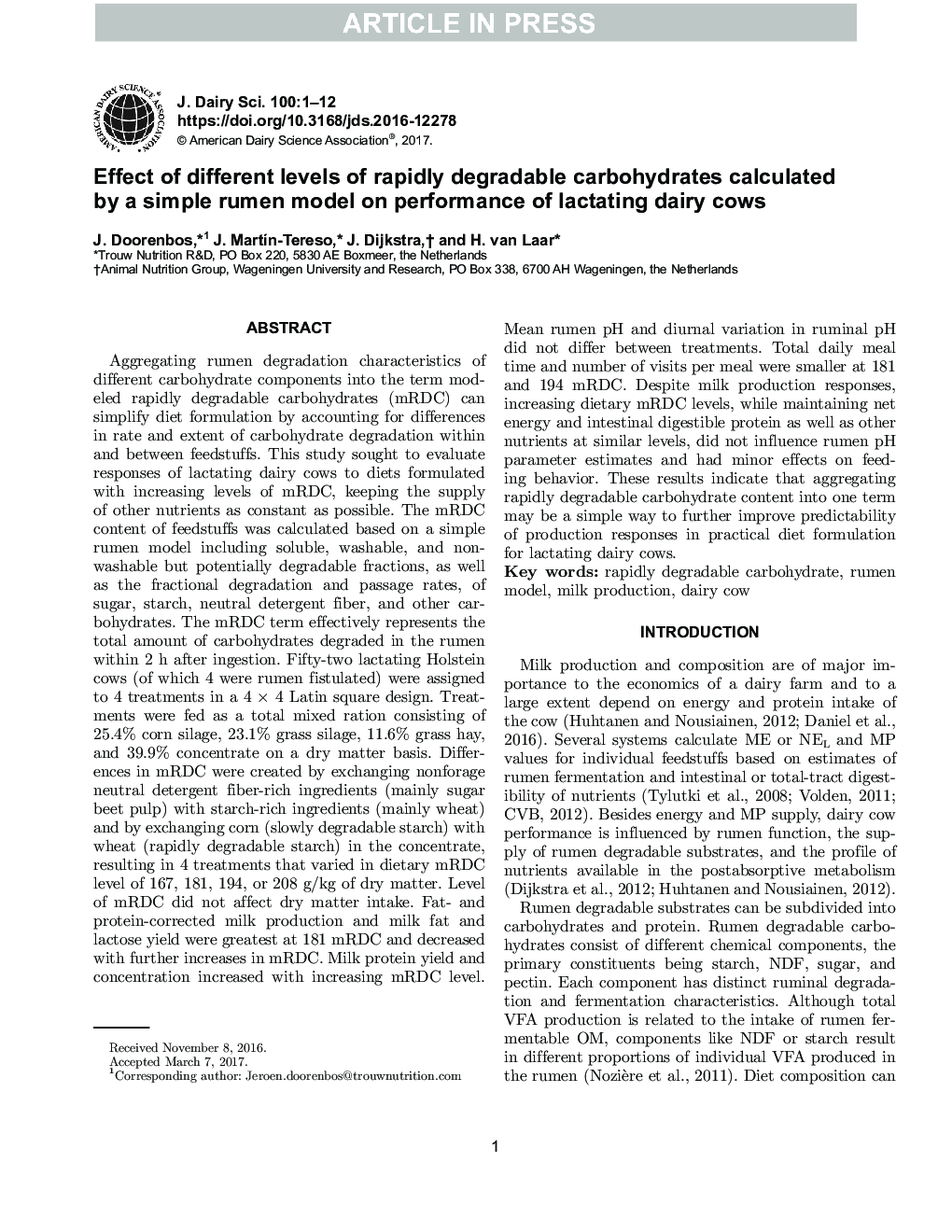| Article ID | Journal | Published Year | Pages | File Type |
|---|---|---|---|---|
| 5541749 | Journal of Dairy Science | 2017 | 12 Pages |
Abstract
Aggregating rumen degradation characteristics of different carbohydrate components into the term modeled rapidly degradable carbohydrates (mRDC) can simplify diet formulation by accounting for differences in rate and extent of carbohydrate degradation within and between feedstuffs. This study sought to evaluate responses of lactating dairy cows to diets formulated with increasing levels of mRDC, keeping the supply of other nutrients as constant as possible. The mRDC content of feedstuffs was calculated based on a simple rumen model including soluble, washable, and nonwashable but potentially degradable fractions, as well as the fractional degradation and passage rates, of sugar, starch, neutral detergent fiber, and other carbohydrates. The mRDC term effectively represents the total amount of carbohydrates degraded in the rumen within 2 h after ingestion. Fifty-two lactating Holstein cows (of which 4 were rumen fistulated) were assigned to 4 treatments in a 4 Ã 4 Latin square design. Treatments were fed as a total mixed ration consisting of 25.4% corn silage, 23.1% grass silage, 11.6% grass hay, and 39.9% concentrate on a dry matter basis. Differences in mRDC were created by exchanging nonforage neutral detergent fiber-rich ingredients (mainly sugar beet pulp) with starch-rich ingredients (mainly wheat) and by exchanging corn (slowly degradable starch) with wheat (rapidly degradable starch) in the concentrate, resulting in 4 treatments that varied in dietary mRDC level of 167, 181, 194, or 208 g/kg of dry matter. Level of mRDC did not affect dry matter intake. Fat- and protein-corrected milk production and milk fat and lactose yield were greatest at 181 mRDC and decreased with further increases in mRDC. Milk protein yield and concentration increased with increasing mRDC level. Mean rumen pH and diurnal variation in ruminal pH did not differ between treatments. Total daily meal time and number of visits per meal were smaller at 181 and 194 mRDC. Despite milk production responses, increasing dietary mRDC levels, while maintaining net energy and intestinal digestible protein as well as other nutrients at similar levels, did not influence rumen pH parameter estimates and had minor effects on feeding behavior. These results indicate that aggregating rapidly degradable carbohydrate content into one term may be a simple way to further improve predictability of production responses in practical diet formulation for lactating dairy cows.
Keywords
Related Topics
Life Sciences
Agricultural and Biological Sciences
Animal Science and Zoology
Authors
J. Doorenbos, J. MartÃn-Tereso, J. Dijkstra, H. van Laar,
